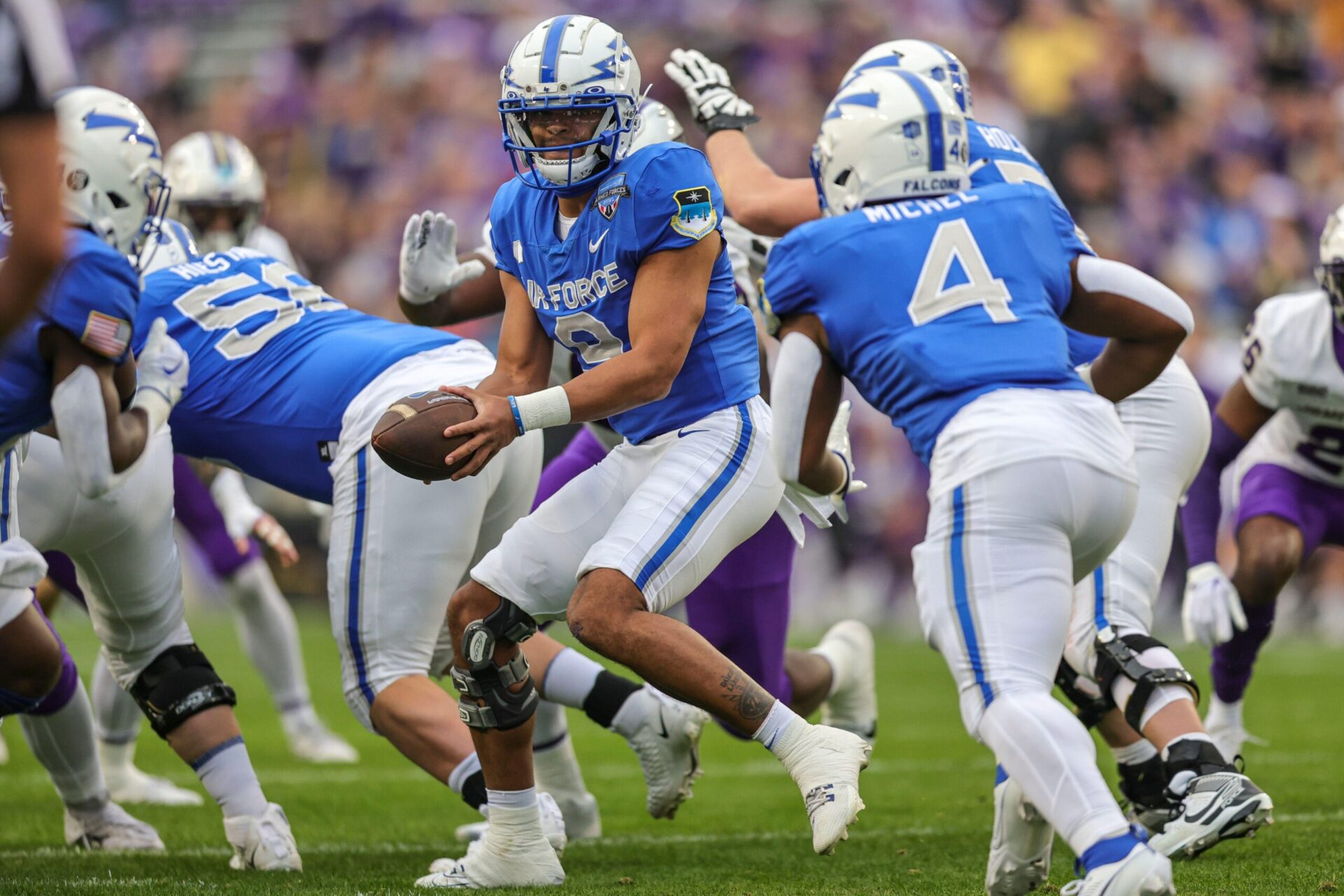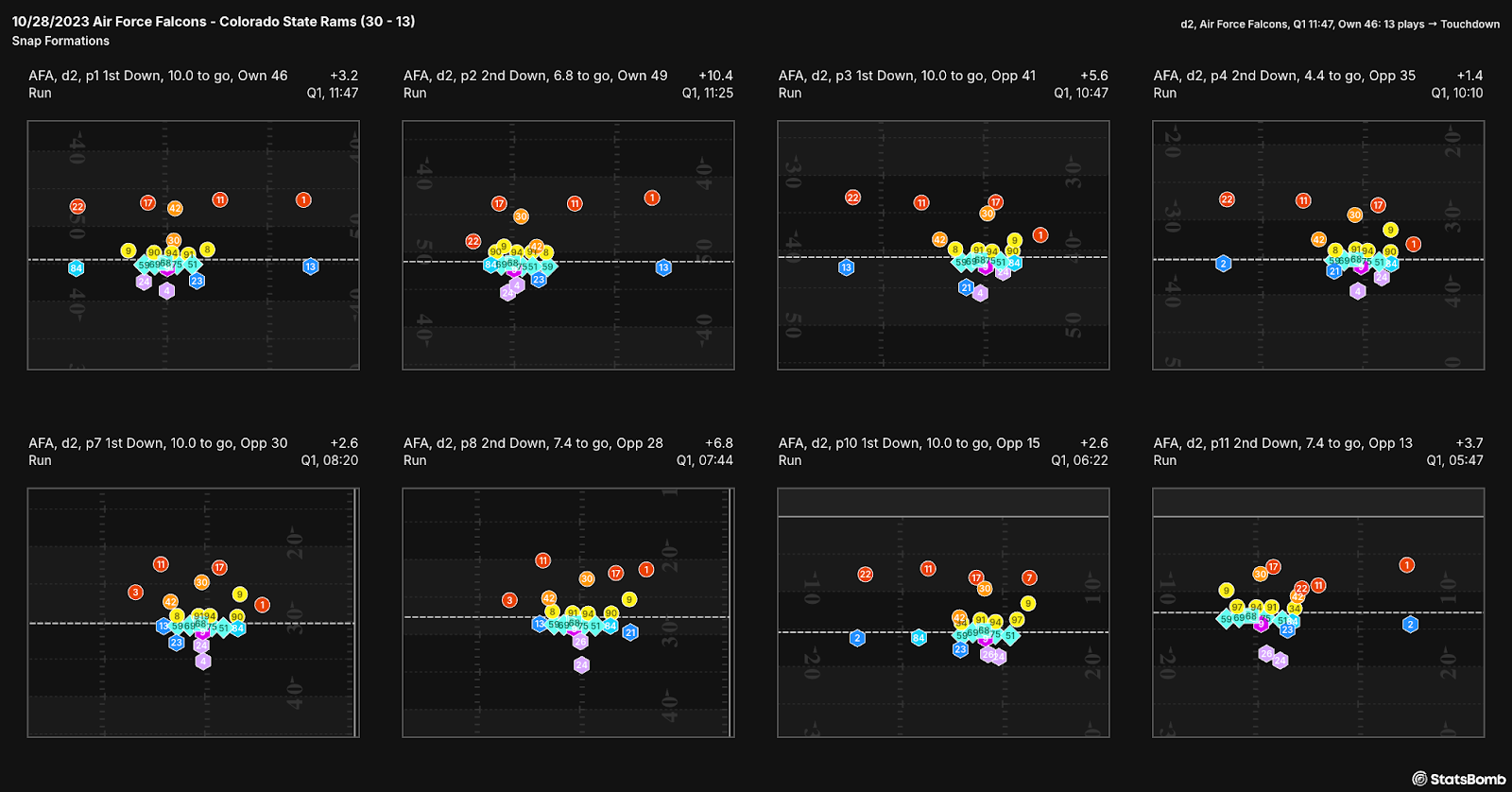NOTE: Following Hudl’s acquisition of Statsbomb, its football platform is now called Hudl IQ. Learn more about the acquisition here.
So far in our 2024 College Football preview series, THE Coach Matt Edwards has used Hudl IQ's physical metrics to look at returning players you should know. In this preview, I am going to shift gears and evaluate teams doing interesting things with formations and personnel.
On a college football Saturday, if I have no rooting interest during a specific TV viewing window, and there is no big matchup, I usually try and pick a game that will present something odd. It could be an unusual stadium, or uniform, or weather, a weird offensive or defensive style etc. This means I spent a lot of time watching the unique variant on the triple option that Jamie Chadwell and Grayson McCall ran at Coastal Carolina. I always enjoy watching the academies play because the triple option is weird and fun.
In this article, I am specifically exploring offenses from 2023 that did weird things worth tuning in to watch. Do not worry, I did not forget about defense, that article will come next.
Formations
There are different ways to analyze formation usage but to keep things very simple I only wanted to see which teams run the most, and fewest, distinct formations. Often you will hear analysts and commentators refer to this as being multiple on offense, or not.
At Hudl IQ, we use our computer vision to collect the x,y position of every player on every play at 30 frames per second. Our data science team takes these coordinates as inputs into a formation classification model that allows us to automate the formation tagging process instead of the traditional method of grad assistants watching film and tagging plays manually.
Our models allow us to tag the initial formation a team lines up in, the type of motion, and then finally the formation at time of snap. Here I will focus on the snap formations used.
To remove game situations that potentially dictate an offense's play call, such as goal line or 3rd and very long, I only wanted to look at open plays. I define these as:
- 1st or 2nd down
- Distance to go between 3 and 15 yards
- Field position between own 10 and opponent 20
- Score difference within 4 touchdowns
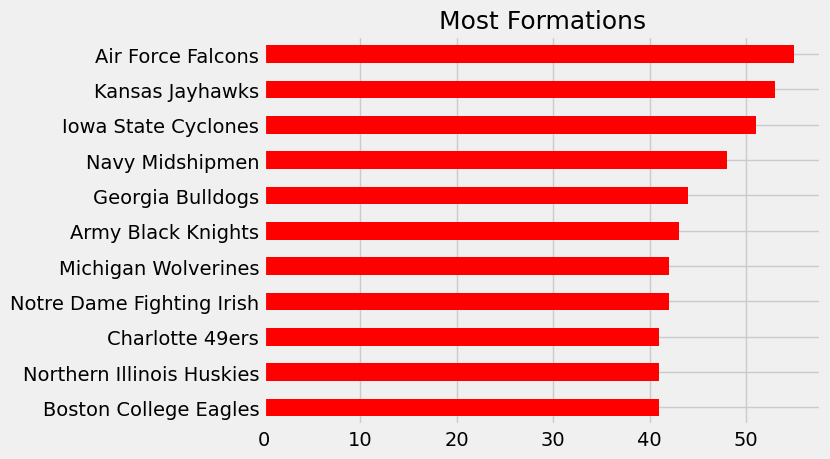
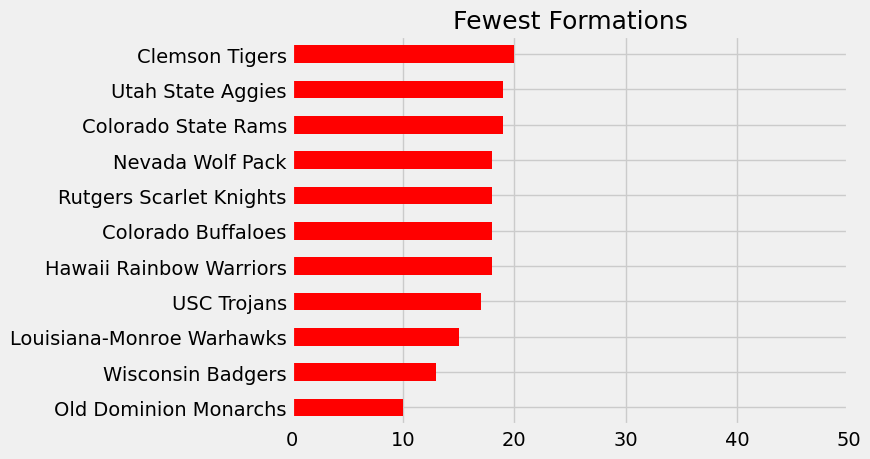
My first reaction at seeing the results was surprise to see all three military academies in the top six. When I think of the academies I think triple option, long drives, with the same play over and over. In reality the triple option allows for the same play to be run from multiple formation sets to slightly change angles of attack and leverage on defenders.
What is awesome about our Hudl IQ is we can visualize all these distinct formations. Here are eight open play snap formations Air Force used during a random 13 play 54 yard touchdown drive against Colorado State. All eight snaps were runs as you would expect from a triple option team, and each has slight variations on traditional flexbone alignments.
Penn State fans should be interested to see Kansas come in at number two on the list. Under Mike Yurcich last season, the Nittany Lions finished 62nd in number of formations used. James Franklin fired Yurchich during the season and hired Andy Kotelnicki from the Jayhawks in an attempt to jumpstart the offense and get the most out of Drew Allar.
Iowa State was another surprise coming in at number three. Iowa State ran a lot of unbalanced variations of standard formations, specifically our model tagged 115 snaps with some form of an unbalanced look. They often employed an H back in a sniffer type alignment, and used extra tight ends on the line.

Moving down the list to the fewest formations used we find Old Dominion in 132nd with a scant 10 formations used. The Monarchs used what our model classifies as Deuce formation on 54.4% of open plays. A sample drive against Virginia Tech shows an example of the Monarchs’ catalog of Deuce formations, with the two wide receivers on each side lined up extra wide almost to the sideline. They run out of this formation at a 58.5% clip so generating space for running lanes is just as important as spreading defenses to create passing lanes. It is clear head coach and former offensive coordinator Ricky Rahne likes to play with width in an attempt to make defenses defend in space. This is a similar philosophy to Josh Hupel at Tennessee, and the Volunteers come in at 119th on my list with only 21 distinct formations.

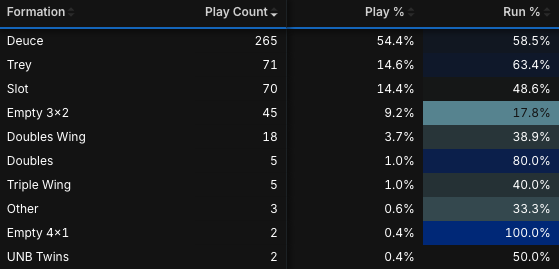
Phil Longo has brought an entirely new offensive philosophy to Madison and it is interesting to see Wisconsin with only 13 distinct formations used. The Badgers use Deuce and Trey around 83% of open plays. While at North Carolina, Longo used those two 67.2% of the time.
Personnel
Just as I did with formations, I looked at which teams used the most and fewest personnel groups during the 2023 season. I went beyond the standard 11, 12 etc. groupings and included lineman to account for teams that run heavy packages. What I found was less interesting from a specific team perspective but rather a larger theme. There is an old saying that “necessity is the mother of invention” and what I found looking at the teams that used the most personnel groupings was that they often had personnel issues, whether they be injuries or struggles at key positions.
This was most evident last season with Syracuse. The Orange used 19 distinct personnel groupings when including lineman. Their game against Pitt highlights the struggle Syracuse faced and how they used personnel to overcome those struggles. Quarterback Garrett Shrader fought through a shoulder injury for much of the second half of the season and was limited in many games. Against Pitt, the Orange employed tight end Dan Villari as a wildcat quarterback and used what was easily my favorite personnel group of those I found doing this research.
That personnel group is 5 offensive linemen, 1 defensive linemen, 2 running backs, 2 wide receivers, and 1 tight end. So if you see a team with key position injuries or struggles don’t just tune them out. You very well could see some of the best and most creative coaching all season.
Motion
The last thing I looked at for oddities was motion usage. Hudl IQ's motion model classifies seven different motion types. When I pulled the data 108 of the 132 teams used all seven motion types at least once during open play. One team however, far and away used the fewest motions, at only four. That team to no surprise was the Iowa Hawkeyes. Iowa has a new offensive coordinator this season so I will be watching to see how their motion usage changes.
Next time I will take a look at the defensive side of the ball and evaluate how teams used fronts, blitz’s, and coverages.
Shane Regel
Product Manager Football
